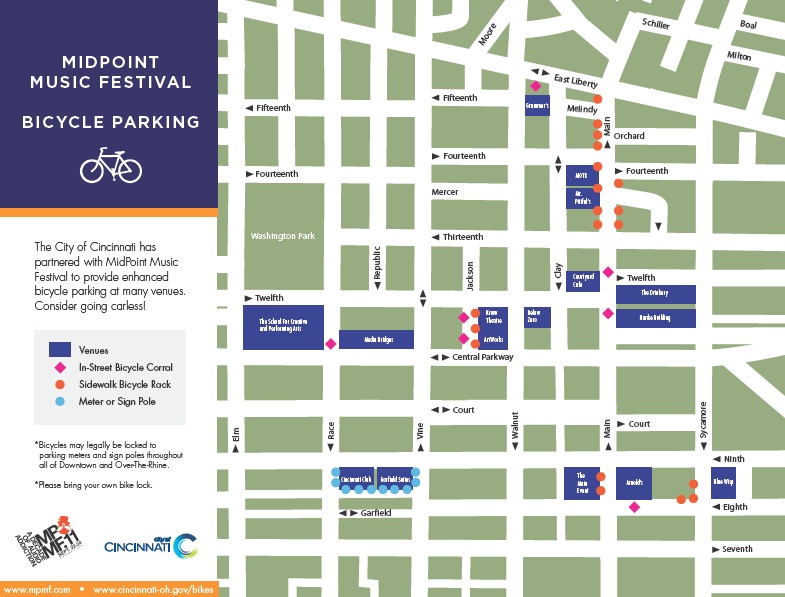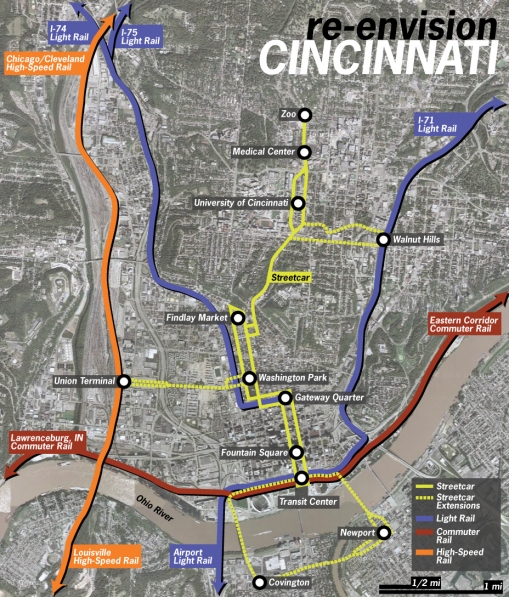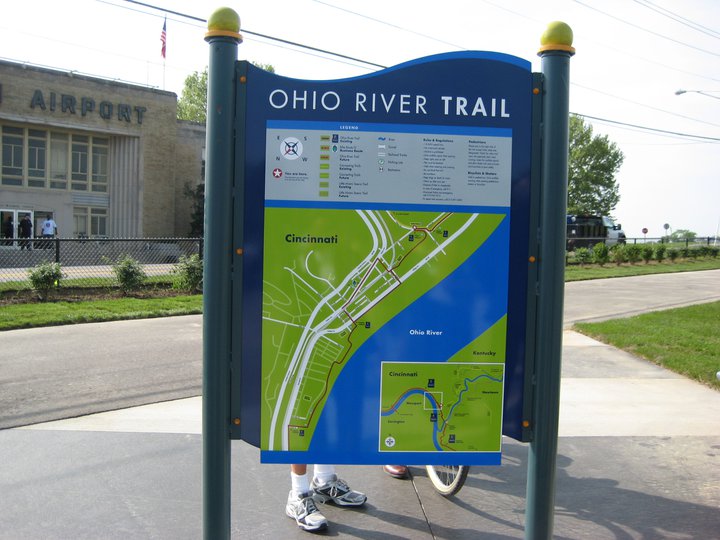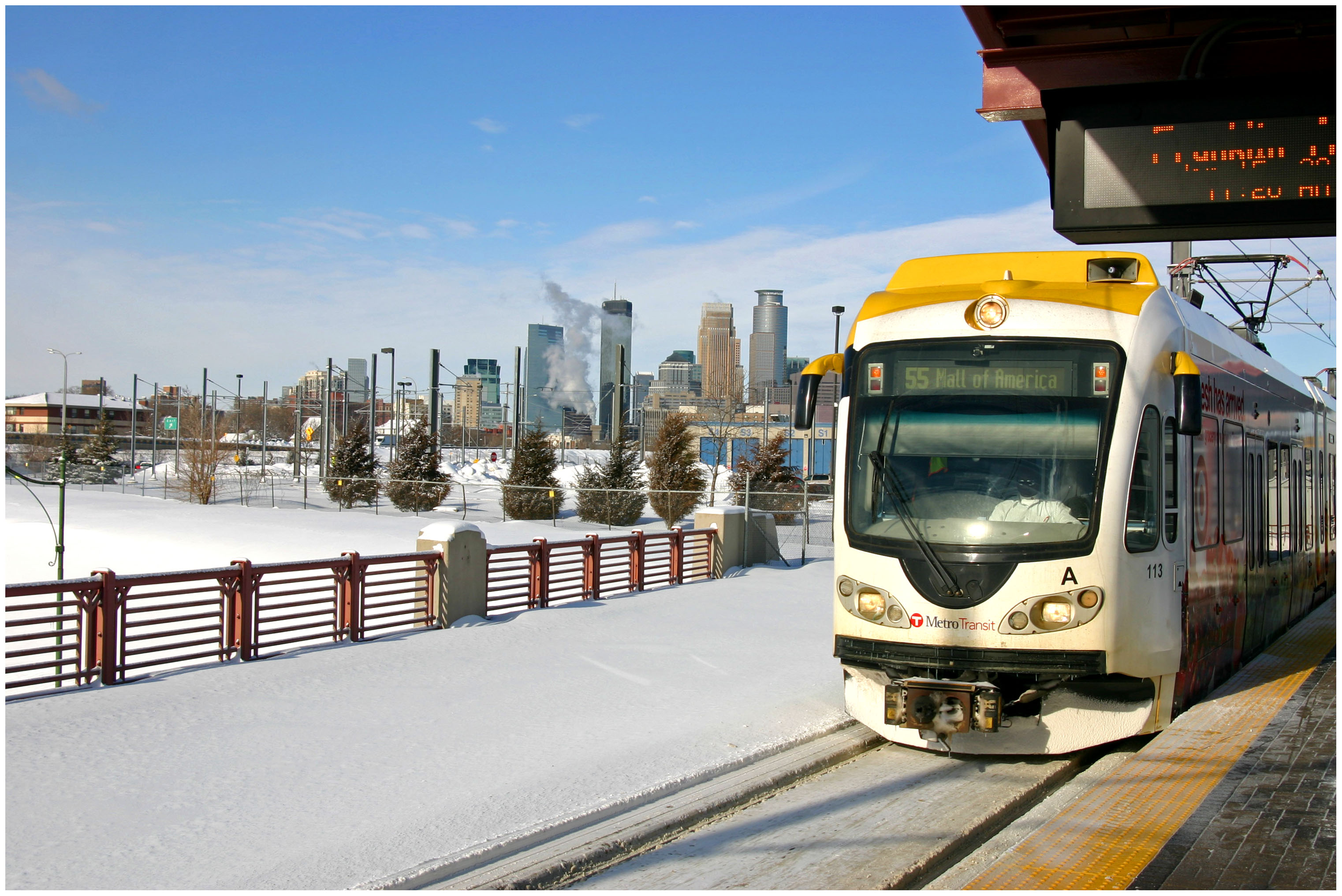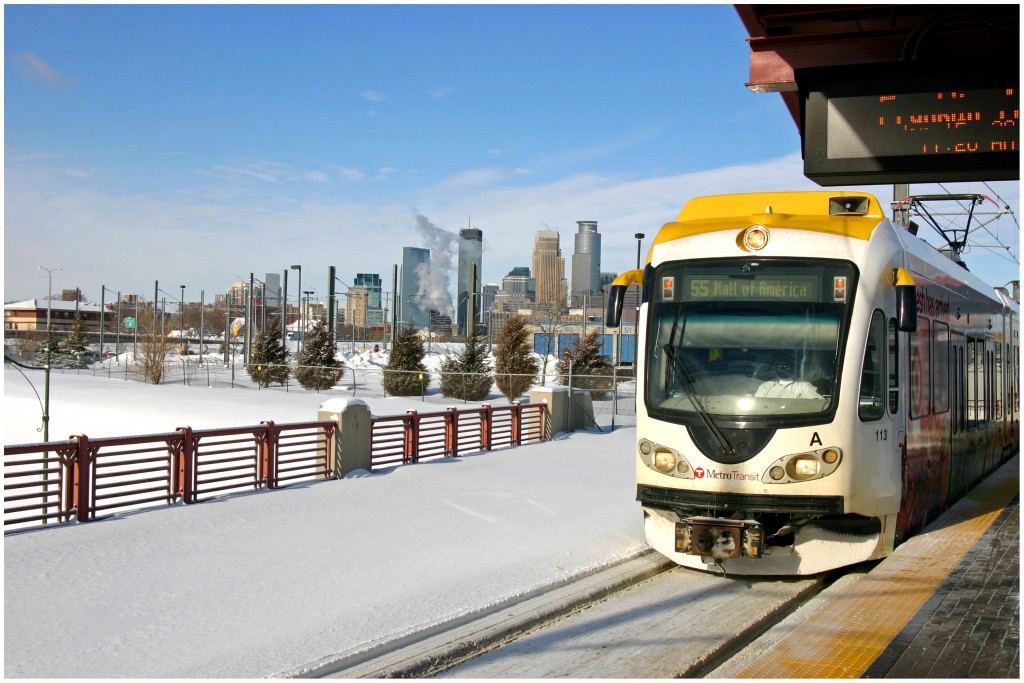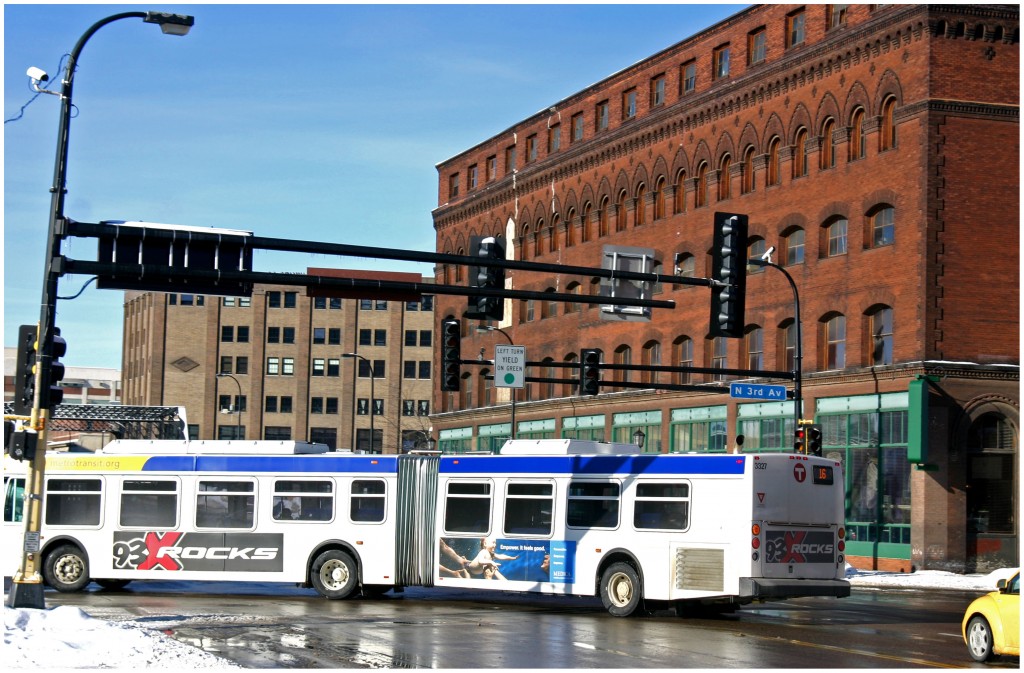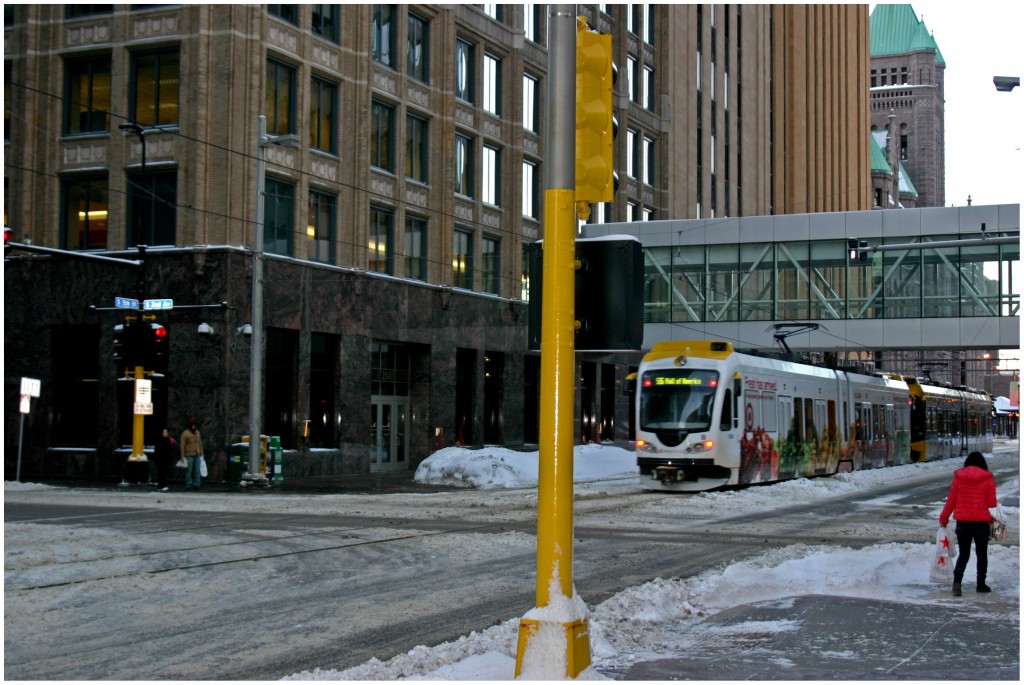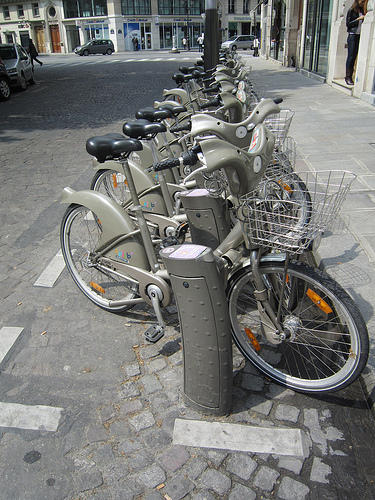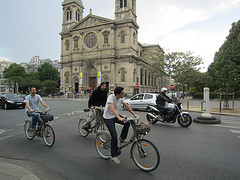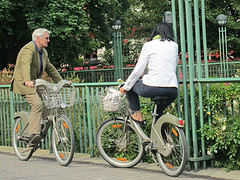Throughout the summer, tens of thousands of music fans gathered on Fountain Square for the MidPoint Indie Summer music series. The series was an opportunity for fans to get a free preview of some of the 186 bands that will perform over MidPoint Music Festival’s (MPMF) 18 venues in downtown Cincinnati and historic Over-the-Rhine (OTR).
For those music lovers and more, the three-day festival is now almost here with the first bands taking their respective stages at 7:30pm on Thursday, September 22.
Those looking to easily get around Cincinnati’s urban core during the festival will have a new amenity this year thanks to festival organizers and the City of Cincinnati who have partnered to convert six on-street automobile parking spaces into 72 on-street bicycle parking spaces.
These new temporary spaces will join the permanent on-street bicycle parking outside of Park+Vine on Main Street, and the dozens of permanent off-street bicycle racks found around MPMF venues. There will also be a number of new temporary off-street bicycle racks provided during the festival which is expected to draw more than 20,000 music fans.
“We want to encourage festival goers to try going carless this year,” said Michael Moore, director of Cincinnati’s Department of Transportation & Engineering (DOTE). “With all of the venues located in such a compact area in OTR and Downtown, this is a great opportunity to experience how easy it is to get around town on a bicycle.”
In addition to a robust new bicycle parking plan, MPMF has also added The Righteous Room and The Lackman as official after party locations. In the festival’s tenth year, it is also taking a more decidedly Over-the-Rhine focus with nearly 80 percent of the music venues now located within the historic neighborhood.
Organizers say that single tickets and three-day passes are still available, and can be purchased online or at the door for whichever performance you are interested.
